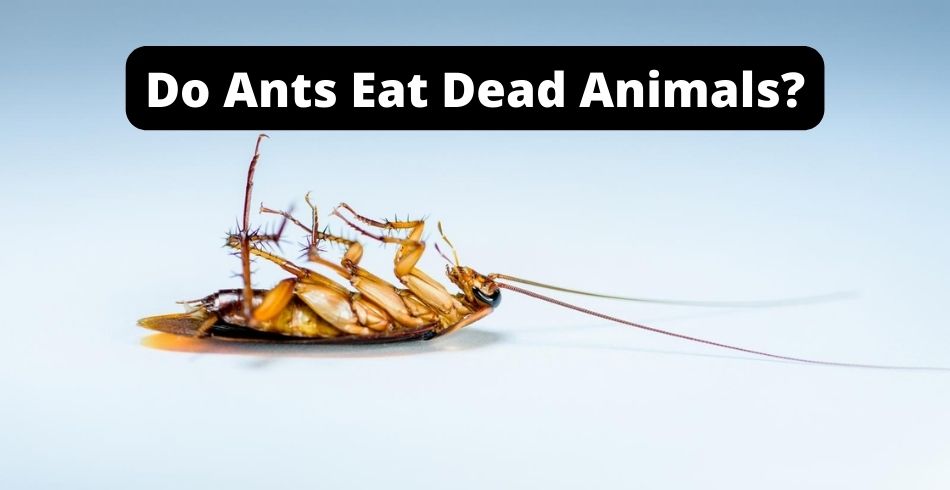While ants are well-known for raiding picnics and other food-bearing activities, what happens when we’re not around? Do these ants eat dead animals, and if they do, do they eat other ants? How hungry would you have to be to eat your own species?
Ants are omnivorous and do eat dead animals. Ants require proteins which they get from a variety of sources. Ants eat dead insects and sometimes other dead ants. Some species specifically hunt, kill, and eat other insects to meet their protein needs.
Do Ants Eat Dead Animals?
Most ants species are scavengers and will eat anything they find for their energy and protein needs. Dead animals and insects are a convenient food source since they (no longer) can run. These dead animals are full of essential minerals that help the queen grow the colony.
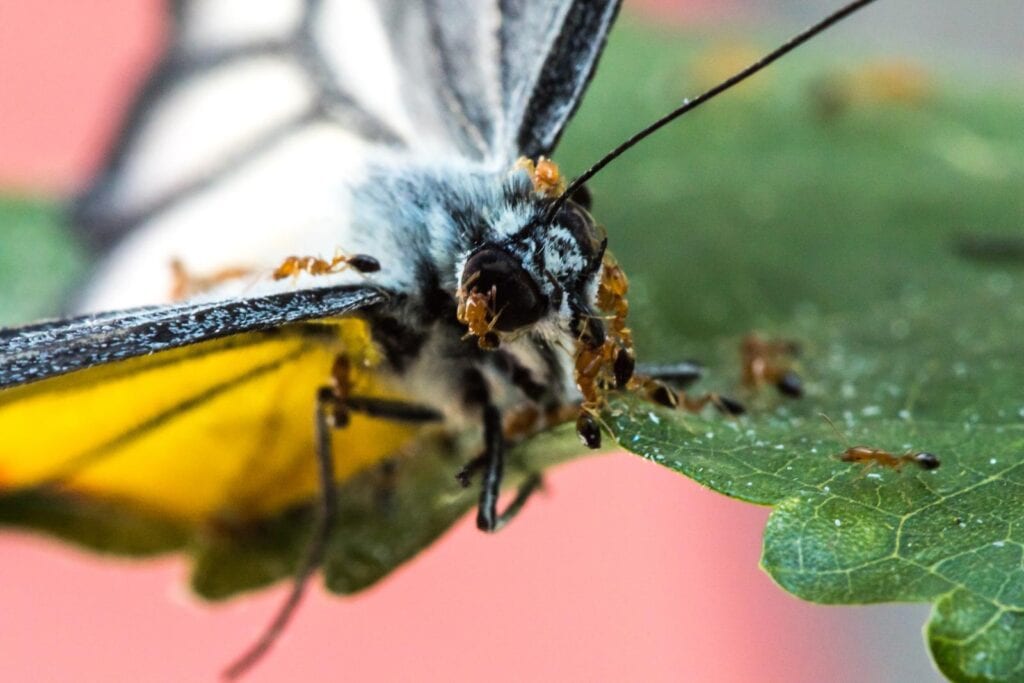
How do ants find dead animals?
Ants have a highly acute sense of smell. Dead animals emit gases when they start rotting, and ants use the olfactory sensors in their antennae to pick out these potential foods. That’s why we see ants swarming decaying corpses of dead animals or other dead insects.
Ants pick out these odors fast because of their advanced smelling capabilities.
Ants’ sensory capabilities are highly advanced and pick even tiny concentrations of odors.
Will ants eat dead mice?
Dead mice are loaded with nutrients essential for the ants. Like other dead animals, dead mice are a great source of proteins for worker ants to bring to the queen ant. Ants are opportunistic hunters, and an ant colony that lands on the carcass of dead mice find it valuable.

Do ants eat dead ants?
One ant species will eat dead ants of another species or colony, and this is because dead ants of other ant species are a source of nutrients similar to other insects or dead animals. Unless in severe food shortage, ants do not eat dead nestmates or other ants in their colony.
In addition to eating dead bugs, dead cockroaches, and dead animals, ants feed on other dead ants.
Some invasive ants, such as the red fire ants or the army ants, invade, kill other ants and eat them.
For the latter, killing rival ants and eating them for food is actually one of their main objectives.
Army ants are able to claim massive amounts of land by getting rid of competitors in the area.
However, realize that some species of ants have satellite nests.
While you may think these are “enemy” nests, these nests are actually part of a massive colony, just with separate nests.
We see this a lot with polygyne ant populations.
Why don’t ants eat their own dead?
Ants are social insects, and living together yields both pros and cons. A significant downside of ant to ant socialization is exposure to diseases and pathogens. For survival reasons, ants avoid eating their dead to prevent the transmission of diseases from the dead to the living.
As discussed earlier, ants scavenge and eat dead ants from other species and colonies.
They will only feed on dead nestmates in severe food shortage conditions.
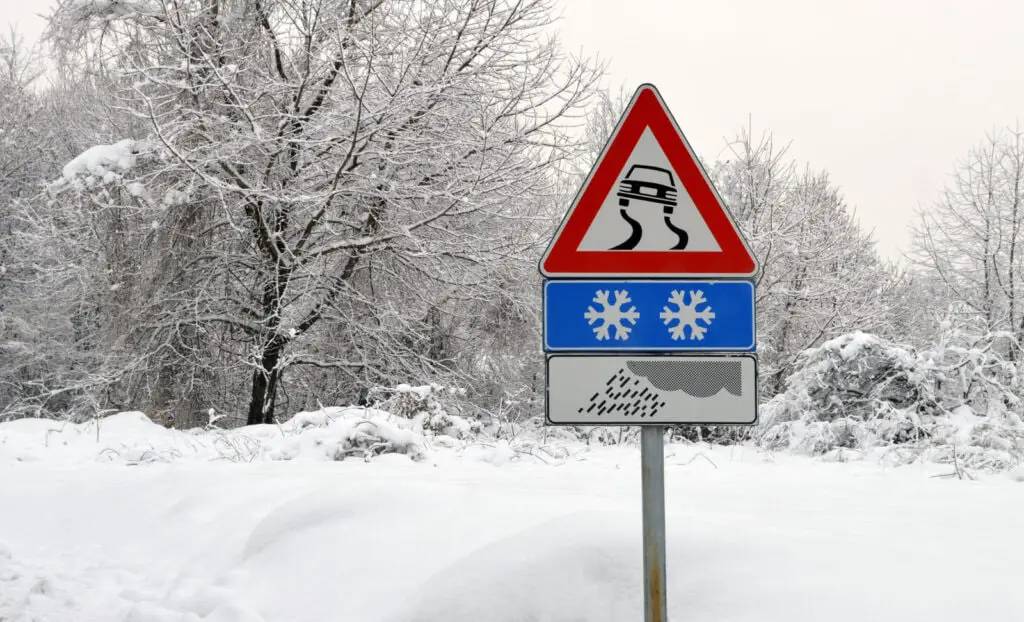
What do ants do with their dead ants?
Other worker ants bury dead ants at a waste deposit site outside the nest. Removing dead carcasses from their own nest helps to avoid contamination of the colony. This also prevents the spreading of diseases and bacteria because it eliminates the chances of harmful microorganisms growing.
If you’re keeping ants, cleaning the nest increases the survival fitness and lifespan of your ants.
They will set up something called a midden.
Even in the wild, ants that do it live longer than those that do not remove carcasses after an ant dies.
In some ant species, diseased ants voluntarily leave the colony before they die to avoid contaminating others. (Source)
Can ants eat live animals?
Most ants do not eat live animals but rather scavenge dead ones. Some ants, though, eat both dead and live animals. Army ants are the most well-known for this feeding behavior. As they forage, they eat anything they come across in their path, whether alive or dead.
For this behavior, army ants’ alternative name is driver ants because they drive away any animal in their way or it gets devoured.
As they raid forested areas, they will feed on other insects, such as beetles.
Army ants also kill small animals such as frogs, crabs, lizards, locusts, and scorpions.
They do so by injecting a muscle-dissolving solution into the flesh or muscles of their prey.
Once the body parts start dissolving, they quickly tear the flesh, eat it and move to search for the next prey. (Yikes)
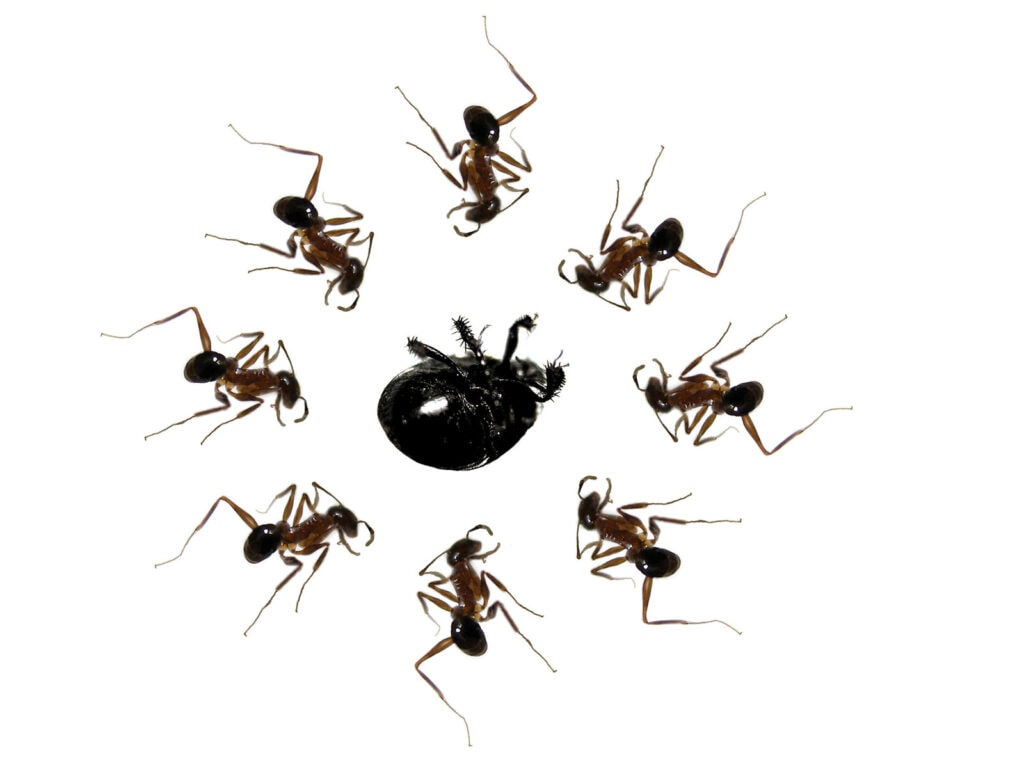
What is An Ant’s favorite food?
Ants prefer sweet foods. Sugar syrup, honey, plant syrup with high sugar content, or ripe fruits are all attractive sources. Food crumbs with high sugar contents are liked by most ants too, and fatty meat and cheese are favorite protein sources.
Ants require both proteins and carbohydrates.
Proteins are for growth and fed to the queen and larvae.
The queen needs many proteins for her egg-laying role, and larvae require proteins to grow and hatch to mature ants.
Carbohydrates provide energy to worker ants.
Ants prefer sources with carbohydrates more than those with proteins.
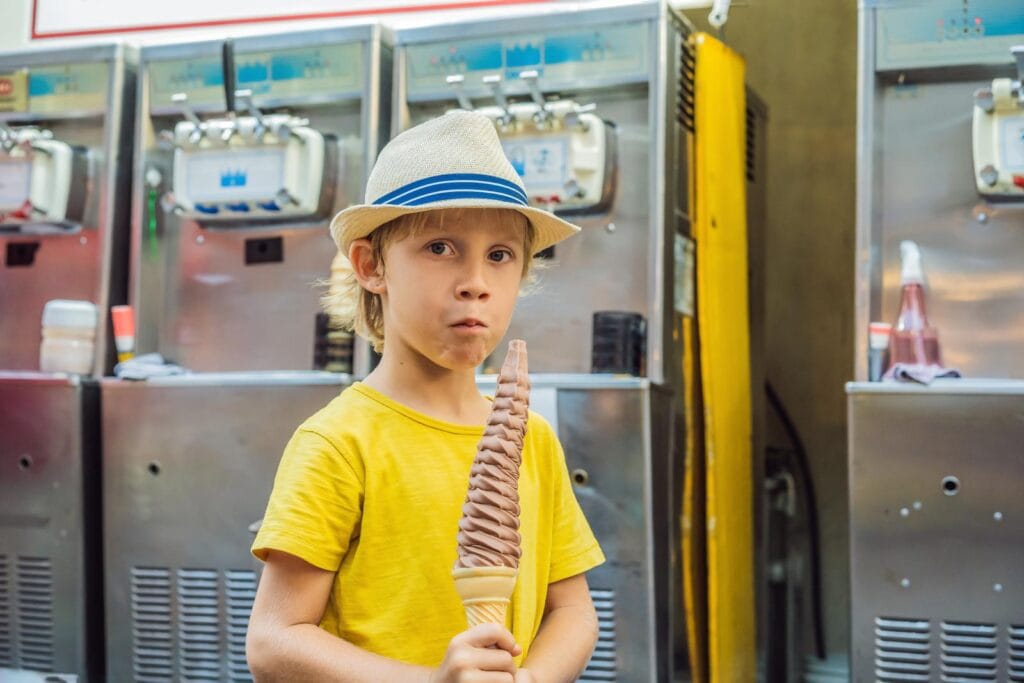
The preferred food source depends on the needs of ant colonies and the season.
When its reproduction time, proteins are needed more.
In regular periods, carbohydrates are preferred.
Here is a little more on food choices from some ant farms.
What nutrients do ants need?
Ants, like humans, need carbs and proteins for various body functions. Carbs provide energy for foraging and maintaining the nest. Proteins are primarily fed to the queen for her egg-laying needs and the larvae as they develop. The ratio of proteins to starch consumed depends on colony needs.
Further, the choice of nutrients depends on availability (abundance or scarcity) and the season (summer or winter).
Winter requires energy preservation and ants tend to store anything edible to feed on during this period.
What are the effects of food scarcity on ants?
During food scarcity, ants change feeding behavior to survive tough times. For instance, before winter begins, ants stock up in readiness for the cold months when they cannot scavenge. As they prepare for the coming cold months, they store any food, whether starch or protein.
In normal food supply conditions, ants tend to prefer starch to proteins, and they have lesser keenness on the protein starch balance they eat or store.
Before winter or if there is an apparent scarcity, they stock up on anything, irrespective of its nutritional value.
Biologically ants do eat their own dead.
However, in severe food shortages, they do.
Additionally, with a severe lack of protein, some ants cannibalize their larvae to meet their protein intake needs. (Source 1, Source 2)
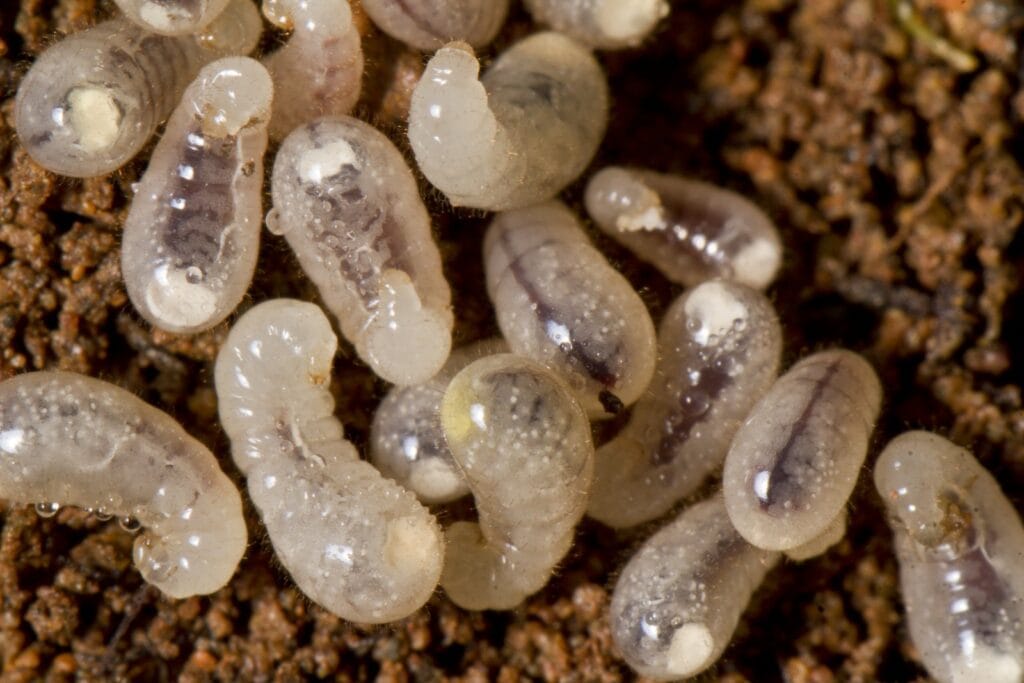
How do ants eat their food?
Ants do not have teeth to grind food like other animals. Instead, they have super strong jaws called mandibles to bite and tear apart tiny pieces of food. They consume large food items by this action of biting away small food particles over and over.
Lumps of food are transported to the nest as tiny particles and stored for future consumption.
Ants don’t waste anything!
How do ants digest food?
Ants are only able to digest food in liquid form. Ants have chemical solutions in the mouth, and when solid food particles mix with these solutions, they become a digestible fluid. The ant only swallows the food when it’s in the form of a digestible liquid.
The digestible fluids pass through a filter that ensures no solids enter the digestive system, and any solid filtered at this point is spat out.
If an ant’s immediate nutrition needs are fulfilled, it holds the digestible fluids in the crop, a section of the ant’s gaster. (eww)
Later, the stored digestible liquid trickle into the midgut when the ant needs energy or nutrients.
Here it’s absorbed into the body, nutrients are extracted, and waste is excreted. (Source)

What do ants eat in nature?
Ants feed on starch for energy and proteins for their growth. Ants eat plant materials for energy, dead animals, or other insects for proteins. In nature, ants eat dead bugs or dead insects for proteins. Many ants eat sugars, most sweet things, leaves, plant syrup, or fruits for energy.
Some ant species, like the leaf cutter ant, feed on certain strains of fungi they cultivate in their nests.
